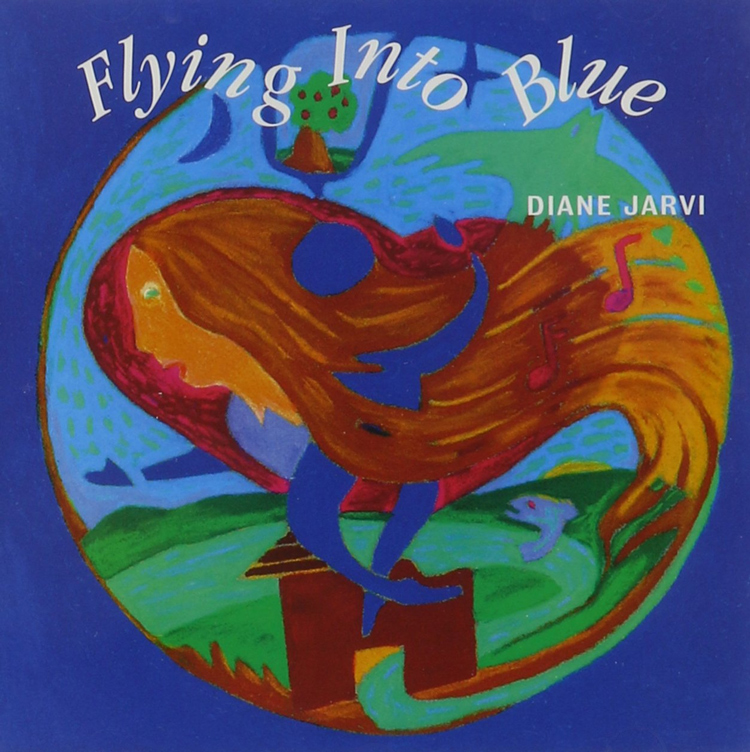A CD review by Susan Budig
Diane Jarvi – Flying Into Blue (Lupine Records, 1999)
Diane Jarvi told me this CD was made to appeal to everyone with lots of lullaby recordings. Indeed, looking through the tracts, I see many of the selections are lullabies. But far from putting me to sleep, I am curious and intrigued. I even find myself mentally singing the lead song, “Flying Into Blue” while exercising at the gym!
Needless to say, I don’t find it lulling.In Finland, Jarvi is known as the Minnesota Satakieli (The Minnesota Nightingale). Aptly nicknamed, Jarvi’s voice is sweet, yet sensuous, matching up with the melodic kantele, a Finnish folk harp. Jarvi plays the 36 string kantele for the instrumental, “Kristiina’s Waltz” and also for a Russian karelia, “Makaa Pieni Blatentsaine.” I imagine little fairies flittering about on their gossamer
wings during the song “Uni Tullee” sung in Ingria and played on the 5 string
kantele.
About midway through the album, Jarvi’s voice changes. It becomes throaty and full and ensconced with ethnic flavor as she pours out “Àillohas.” Jarvi says, “I try to enter the song and the language with as much empathy and respect as possible.” You’ll hear that attitude in every note. This song, sung in Sami, is a joik, a tribute to an event, landscape, emotion or person. Joiks are intrinsic to the Sami culture. You might hear many other artists sing joiks, but you’ll never hear another sung with the raw, yet understated power of Jarvi as she tells us of the “wild child of the wild tundra.”
The many varied languages Jarvi uses could make for a chopped up compilation, but not so with “Flying Into Blue.” The smooth transitions from Yiddish “Raisins and Almonds” to the Spanish tongue of the Mexican tune, “Arrullo,” are seamless.
We are treated to a bit of Gaelic sound with “Mullach A’ Tsi.” When “Aa Tuuti Lasta” is sung in Finnish, Jarvi sounds as though it’s her native tongue. And well it might have been if her two sets of grandparents had stayed put rather than emigrating to the United States from Finland. All the languages, all the sounds complement one another without clashing or fighting. It’s a delightful synchronization.
Author: slb2
Susan Budig draws from music and poetry to create her own poems that she uses to bring healing and recovering from grief to others.


